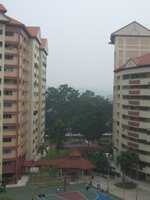Today, I waited about 15 to 30mins for a feeder bus to send me home from IMM. While waiting for my bus to come, I pondered about how frequent should the freqency of a feeder bus be?
Imagine this scenerio, if a person live 20 mins walking distance away from where the bus stop is, and got to wait for about 20 mins for a bus (if he want to take a bus)... Would he rather walk home or wait for the bus..
Every morning, I need to travel to Jurong interchange. I have several ways of reaching my destination. Either..
1. Take a feeder bus, which will stop right at the interchange.
2. Take a non-feeder bus, where I alight along the main road and walk about 5mins to the interchange.
3. Take another non-feeder bus, where I alight along another main road but is 10mins walking distance away from the interchange.
4. Take a cab. This is the last ultimate resort..
Out of 10 working days, I only managed to catch the feeder bus once. What happened to the rest of the 9 days? Most of the time, I waited for 10mins and there is still no sight of the feeder bus. But all the other buses come and go. So instead of waiting, I decided to take the other buses that come along, and walk a longer distance.
I realised that feeder bus generally move more slowly than the other buses. Sometime, it is literally crawing on the road! To reach the interchange via feeder bus, it took at least 15-20mins. But via non-feeder bus (plus walking), I can reach the interchange in less than 15mins! Also, after work, the longest queue in the interchange is the feeder bus queue. Sometimes, the queue can be so long that we have to wait for the next bus. This happened everyday, the passenger number is guaranteed to be so much. Why aren't the government or sbs increasing the frequency of our feedbus ar?
Yet, the public transport fee is forever increasing. But I do not understnad why I am paying more. There is no improvement to the transport frequency, or should I said that the frequency of feeder bus near my home is reducing! Sigh..............


 There are queues outside all food outlets. Some are long, some are short, some super long. After walking rounds and rounds, we finally decided to eat at harbourfront Pasta Mania instead of joining the Vivo queues. But, Singaporeans think a-like. There is a long queue outside pasta mania too!
There are queues outside all food outlets. Some are long, some are short, some super long. After walking rounds and rounds, we finally decided to eat at harbourfront Pasta Mania instead of joining the Vivo queues. But, Singaporeans think a-like. There is a long queue outside pasta mania too! We returned to Vivo after lunch. I decided to get a cup of coffee from coffee bean before continuing with shopping. As usual, there is a long queue. This is one of the few times that I see such long queue at coffee bean.
We returned to Vivo after lunch. I decided to get a cup of coffee from coffee bean before continuing with shopping. As usual, there is a long queue. This is one of the few times that I see such long queue at coffee bean.









